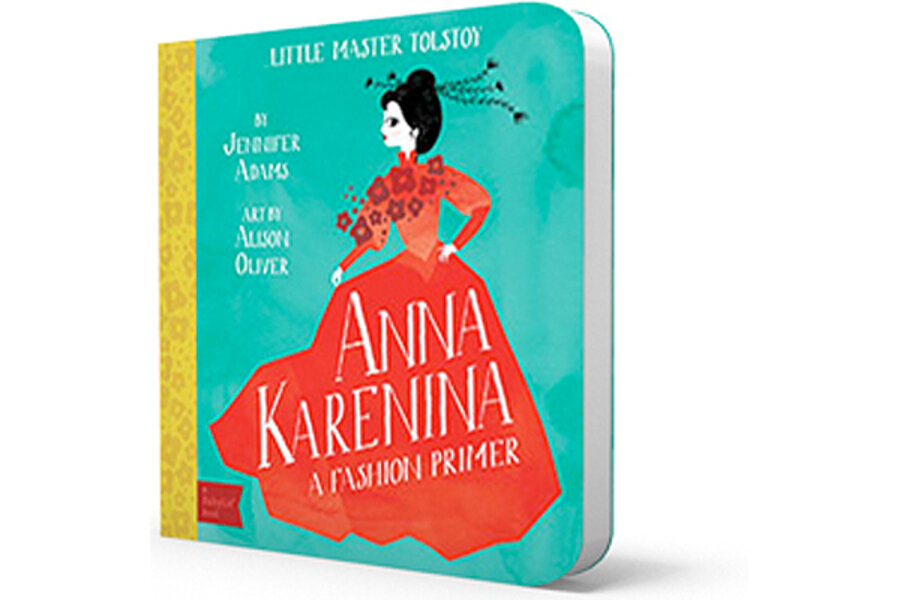'Anna Karenina,' 'Moby-Dick,' and 'Les Miz' – for tots?
Loading...
Talk about starting them young.
The newest trend in children’s board books, it seems, is literary classics adapted for the under-three set. Think “Sense and Sensibility,” “Les Miserables,” yes, even “Anna Karenina” and “Moby-Dick” for babies and tots.
All with bold shapes and colors, and highly chewable corners, of course.
As more and more parents are reading early to their children – some parenting guides suggest starting in infancy – publishers are responding with more substantial fare.
Of course, it’s not the first example of exposing young ones to sophisticated material, as Linda Bubon, an owner and children’s book buyer at Chicago bookstore Women & Children First, told the The New York Times.
“If we’re going to play classical music to our babies in the womb and teach them foreign languages at an early age, then we’re going to want to expose babies to fine art and literature,” she said. “Now we know there are things we can do to stimulate the mind of a baby.”
Cozy Classics and BabyLit, which was conceived when Suzanne Gibbs Taylor, a creative director at a small Salt Lake City publishing house realized no one had ever “taken Jane Austen and made it for babies,” are among the series of literary board books.
BabyLit uses such classics as “Wuthering Heights” and “Romeo and Juliet” as a springboard to explain counting, colors, or opposites, while Cozy Classics illustrates such heavyweights as “Moby Dick” and “Les Miserables” with needle-felted pictures of Captain Ahab and Jean Valjean.
“People are realizing that it’s never too young to start putting things in front of them that are a little more meaningful, that have more levels,” Ms. Taylor, of BabyLit, told the Times. “It’s not so simple as, ‘Here’s a dog, here’s the number 2.’”
It’s a trend that’s catching on. BabyLit has sold more than 300,000 books so far, and if science and retail trends are any indication, it’s a genre that has room for growth.
That’s because children’s books are one of the few genres that have escaped the digital revolution unscathed. Few parents want to read pixels rather than pages when putting their little ones to sleep with “Goodnight Moon,” for example. As such, children’s books are doing relatively well.
What’s more, as more research on early childhood development encourages early reading and early interactions, parents – and publishers – are listening.
And that’s why board books, traditionally seen as cheaper, less attractive fare in the books biz, are getting literary makeovers.
As one publishing exec told the NYT, “A board book was [once] little more than a teething ring.”
Now, it seems, they’re canvases for the likes of Shakespeare, Melville, and Tolstoy.
Husna Haq is a Monitor correspondent.







